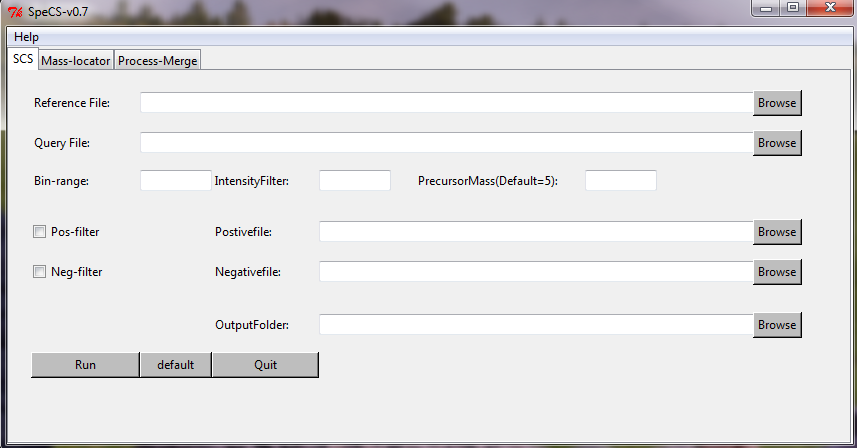The spectral comparison score (SCS) algorithm provides a well-defined quality control approach for PRM based quantitation of lipid mediators. The score is based on the correlation between structural similarity and MS/MS fragmentation profile. All fragment ions above a user defined threshold are considered to calculate a score based on matching m/z and Spearman’s rank correlation between fragment intensities. SpeCS was developed to
1) process raw peak lists,
2) generate customized spectral libraries,
3) perform SCS calculations, and
4) help to identify quantifier ions.
A set of filters can be employed to delete background signals and/or select only fragments that fit the user-defined compositional constraints.
Release Note: Database Expansion
March 28th, 2019: A new version of a spectral library for the Thermo Fisher Scientific Q Exactive mass spectrometer with new lipid mediators is now available. For detailed information:
QExactive Mediator Library
Download SpeCS v.0.7.
The new version enables now to utilize XReport (Xcalibur, Thermo) generated peak lists as import into SpeCS. Such generated peak lists can directly be used as Query in SpeCS without any modification (see also Readme-File).
Additionally, this release contains an updated library of LMs for the Q Exactive with 13 new lipid mediators.
Windows

GUI for the calculation of the Spectra Comparison Score (SCS). SpeCS is able to automatically filter peak lists by matching with a library of background or target mass lists. Peak lists are compared considering user definable settings for mass accuracy and intensity threshold settings. The calculation of the score is based on Spearman's rank correlation of matched signals.
Publications
Adam Wutkowski, Matthias Krajewski, Navratan Bagwan, Mathias Schäfer, Bhesh R.Paudyal, Ulrich E. Schaible, Dominik Schwudke,
Software-aided quality control of parallel reaction monitoring based quantitation of lipid mediators,
Analytica Chimica Acta (2018),doi:10.1016/j.aca.2018.01.044. originally published SpeCS version: v0.6 for Windows
Bioanalytical Chemistry - Research Center Borstel
Dr. Domink Schwudke - Research group leader
Dr. Adam Wutkowski - Research Center Borstel




